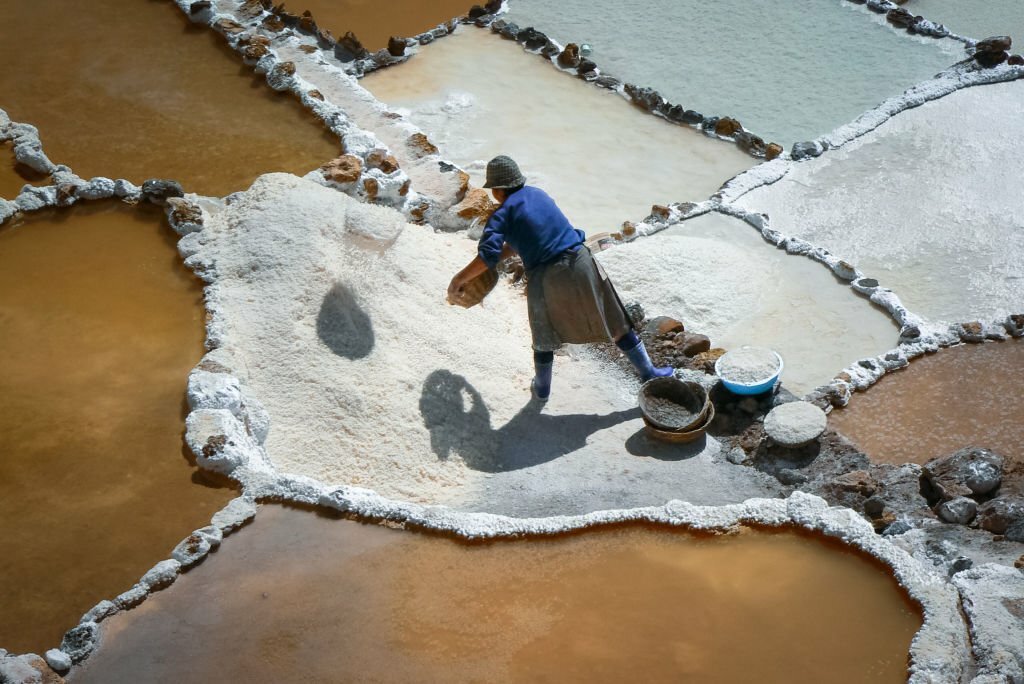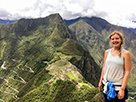Perched high in the Andean mountains of Peru, the Maras Salt Ponds unfold like a surreal mosaic against the natural canvas of the Sacred Valley. This ancient site, where the tradition of salt harvesting dates back centuries, offers a captivating glimpse into the harmonious interplay between human ingenuity and the bounties of nature. The Maras Salt Ponds stand as a testament to the enduring cultural practices that have shaped the landscapes of Peru.
1. A Timeless Tradition:
The Maras Salt Ponds, also known as Salinas de Maras, boast a history that predates the Inca Empire. Indigenous communities in the region have been harnessing the mineral-rich waters of a subterranean spring to create salt through a meticulous evaporation process. This age-old tradition has been passed down through generations, embodying the cultural continuity that defines the Andean way of life.
2. Unique Landscape:
What makes the Maras Salt Ponds truly extraordinary is their visual spectacle. Nestled on the slopes of the Qaqawinay mountain, thousands of terraced, shallow pools cascade down the hillsides like a terracotta-hued staircase. The vivid contrast between the salt ponds and the surrounding greenery creates a mesmerizing panorama that draws visitors from around the world.
3. The Salt Extraction Process:
The intricate process of salt extraction at Maras begins with channeling the mineral-rich springwater into the numerous ponds. As the water evaporates under the intense Andean sun, it leaves behind crystallized salt on the pond’s surface. Local workers carefully harvest the salt, a labor-intensive task that requires a delicate touch to preserve the purity and quality of the product.
4. Environmental Harmony:
The Maras Salt Ponds exemplify the harmonious relationship between human activity and the natural environment. The salt extraction method employed here is ecologically sustainable, relying on natural processes rather than industrial methods. The site serves as a living example of how traditional practices can coexist with nature, contributing to the biodiversity of the region.
5. Cultural Significance:
Beyond its practical purpose as a salt-producing site, Maras holds cultural significance for the local communities. The stewardship of the salt ponds is often passed down within families, and the annual salt harvest is accompanied by rituals and celebrations that honor the spirit of the land and express gratitude for the bounty provided by the mountains.
6. Economic Importance:
The salt harvested at Maras has not only sustained local communities for centuries but has also become a sought-after product on the international market. Maras salt, known for its distinct flavor and mineral content, has found its way into the kitchens of renowned chefs and food enthusiasts, contributing to the economic well-being of the region.
7. Tourism and Preservation:
The increasing popularity of Maras Salt Ponds as a tourist destination brings both opportunities and challenges. While tourism provides economic benefits, it also necessitates responsible management to ensure the preservation of the site. Local initiatives and community involvement play a crucial role in balancing the influx of visitors with the need to protect the cultural and ecological integrity of Maras.
8. Maras in the Sacred Valley Circuit:
Maras Salt Ponds are often included in the Sacred Valley circuit, a popular route for travelers exploring the Andean region of Peru. The proximity of Maras to other iconic sites such as Machu Picchu and Ollantaytambo makes it a compelling stop for those seeking a deeper understanding of the cultural and natural wonders of the Andes.
In conclusion, the Maras Salt Ponds stand as a testament to the enduring legacy of traditional Andean practices and the remarkable beauty that emerges when humans work in harmony with nature. As visitors traverse the terraced slopes and witness the age-old process of salt harvesting, they not only engage with a centuries-old tradition but also become part of a narrative that weaves together culture, landscape, and sustainability in the heart of the Andean highlands.
Book here.










Comment (0)